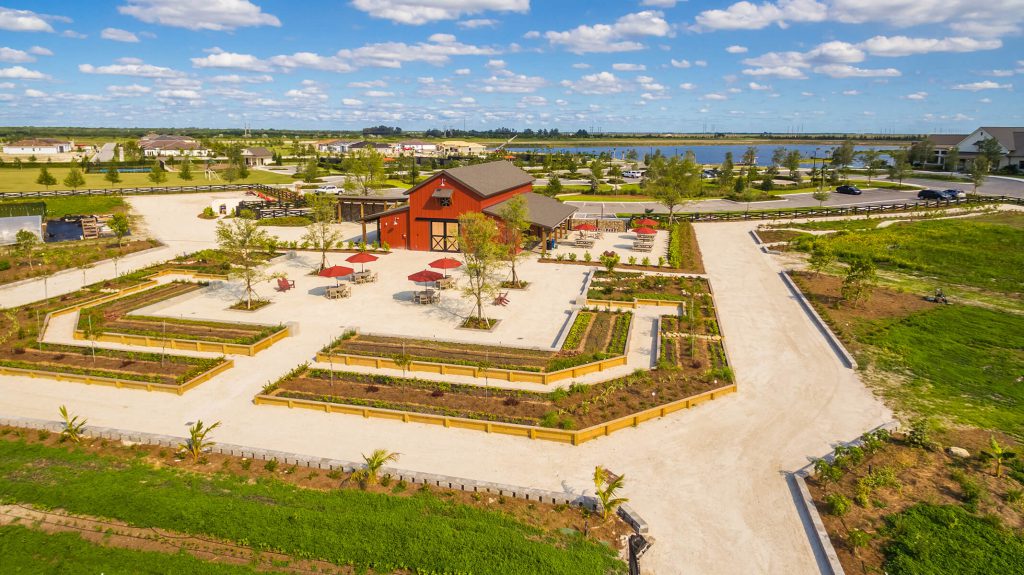
July 27th, 2022
Putting Down Roots: Agrihoods help you commune with nature and like-minded neighbors
Excerpts from original article by Sarah Sekula for USA Today
The Urban Land Institute (ULI) estimated there were more than 90 agrihoods operating or in development in the U.S. in 2019. The fundamental appeal: Why go to a farmers market when you can live at one?
The developers of Miralon in Palm Springs, Calif., scrapped the idea of refurbishing a golf course on their 309-acre site, opting instead to plant 7,000 olive trees. Residents get an allotment of the oil each year, and there are 26 raised garden beds where they can pick their own organic herbs and edible flowers. The developers also left 97 acres of green space for citrus groves, walking trails and parks in the community, which features single-family homes from $900,000.

Arden Agrihood
Arden in Palm Beach County, Fla., offers organic gardening workshops and classes on home composting. Singlefamily homes range from $400,000 to $700,000.
Arden’s 5-acre farm is run by two full-time directors, Tripp and Carmen Eldridge, who are experts in small-scale organic farming and got their start in the Peace Corps.
The momentum around agrihoods and other farm-to-table trends “has been building all through the ‘good food’ movement,” says Tripp. “As millennials come of age and move into their own homes, we’re seeing that a connection to nature and to each other is important to people when they’re deciding where to live. Connecting with where your food comes from, from seed to plate, is a really easy way to achieve this.”
Interest in agrihoods continues to grow, says Matthew Norris, director of ULI’s Building Healthy Places Initiative. “People are looking for access to locally grown food and are more aware of the health and environmental benefits of eating local produce.”